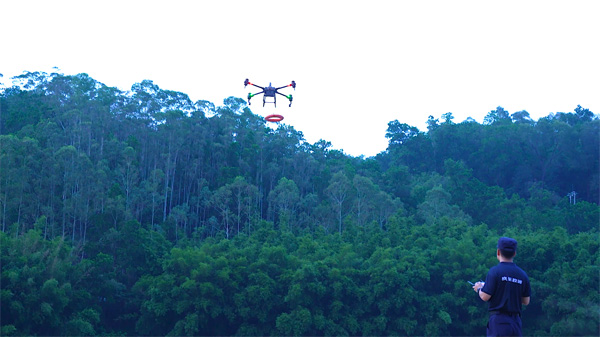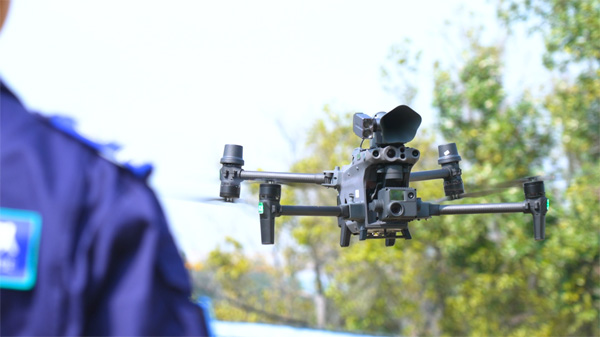Aerial drone firm devotes to Tianhe's development
In the wake of the Guangdong Low-altitude Economy High-quality Development Conference held in early July, the city of Guangzhou – the capital of South China's Guangdong province – has launched several measures to promote its low-altitude economy.
The city's quick response is said to be due to its solid industrial foundation, as well as the complete industrial supply chain required by the low-altitude economy – with Guangzhou Chengzhi Intelligent Machinery Technology (CZI) in Tianhe district being one of them.

A drone is used to deliver rescue equipment. [Photo by Cheng Xinghuan and Yan Jincheng/Yangcheng Evening News]
Back in 2018, Liao Kewen, CZI's founder, decided to fully transition to the R&D and production of unmanned aerial vehicles or UAV mission payloads and founded the Chengzhi brand.
In January 2020, CZI launched its first UAV mission payload with mass production, featuring its MP130 loudspeaker.
In 2023, it debuted the world's first drone-loaded product that can do real-time conservation, the MP10E. The C30N intelligent dual-light night vision camera said to have the strongest detection range in the photoelectric pod for civilian drones, was also released the same year.
CZI now mainly focuses on the R&D and production of digital voice broadcasting systems, lighting systems, explosive disposal robot arms, and other products loaded onto drones.
It has 60 core agents and 300 dealers nationwide, as well as more than 100 overseas agents, covering 50 countries and regions.

A CZI searchlight broadcasting unit sits upon a drone. [Photo by Cheng Xinghuan and Yan Jincheng/Yangcheng Evening News]
The company is a national-level "little giant" enterprise. This refers to companies that specialize in niche industries that apply cutting-edge technologies and have powerful growth potential.
It has more than 100 granted patents and its reported average annual growth rate for its operating revenue exceeds 40 percent.
Moving forward, industrial drones are expected to replace manpower and traditional equipment, change the production process and modes, and spur new-quality productivity, Liao said.
